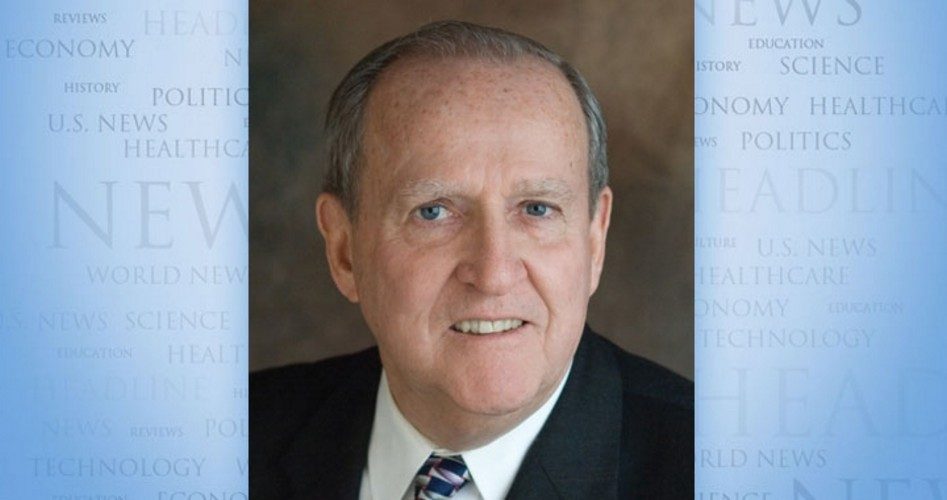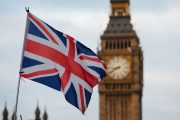
The area directly in front of the White House has long been known as Lafayette Park. During several days at the end of May, it became the scene of demonstations sparked by the death of George Floyd while in the custody of policemen in Minneapolis. When the demonstrators gave evidence of a possible threat to the president and the White House, D.C.’s Park Police police moved in to disperse the throng. And television cameras and commentators recorded what they saw. All of their work then became edited by network professional to support several completely erroneous charges against police who were seeking to put an end to the damage already caused, with more likely being intended.
Subsequently, Attorney General William Barr submitted to an interview conducted by CBS Television’s Margaret Brennan for the June 7 edition of Face the Nation, the program she hosts weekly. Barr found himself repeatedly correcting Ms. Brennan’s assertions, straining to finish sentences in the face of interruptions, and receiving no apologies for obvious attempts to demonize the police, President Trump, and himself. This type of treatment is regular fare for any “guest” who refuses to toe the leftist line regularly dished out by CBS and other networks.
{modulepos inner_text_ad}
Excerpts of the CBS interview follow. The little-known “Insurrection Act” is an old measure that allows a president to use military force as a last resort to combat a domestic insurrection.
Brennan: So, in this Monday meeting with the President, when the Defense Secretary who has now publicly said that he opposed using the Insurrection Act, you said what to the President?”
Barr: I don’t think the Secretary of Defense said he opposed it. I think he said it was a last resort; he didn’t think it was necessary. I think we all agree that it’s a last resort but it’s ultimately the President’s decision. The reporting is completely false on this.
Brennan: Do you believe there is systemic racism in law enforcement?
Barr: I think there’s racism in the United States still, but I don’t think that the law enforcement system is systematically racist. I understand the distrust of the African-American community given the history in this country…. Since the 1960s, I think we’ve been in a phase of reforming our institutions and making sure that they’re in sync with our laws and aren’t fighting a rearguard action to impose inequities.
Brennan: Do you think there should be some tweaking of the rules, such as reduced immunity to go after some of the bad cops?
Barr: I don’t think you need to reduce immunity to go after the bad cops because that would result certainly in police pulling back. Policing is the toughest job in the country. I frankly think that the vast overwhelmingly majority of police are good people. They’re civic-minded people who believe in serving the public. They do so bravely. They do so righteously.
Brennan: But the bad cops?
Barr: I think there are instances of bad cops. And I think we have to be careful about automatically assuming that the actions of an individual necessarily mean that their organization is rotten. All organizations have people who engage in misconduct, and you somethimes have to be careful as to when you ascribe that to the whole organization when it really is some errant member who isn’t following the rules.
Brennan: But doesn’t opening the investigation into a place like Minneapolis where there are questions about the broader issues with policing — it wasn’t just one officer — wouldn’t that answer that question?
Barr: Well, that’s exactly the reaction that I think has been a problem in the past. Reacting to this incident by immediately putting the department under investigation doesn’t necessarily result in improving the situation….
Brennan: On Monday, Lafayette Park was cleared of protesters. The federal agents [Park Police] who were there report to you. Did you think it was appropriate for them to use smoke bombs, tear gas, pepper balls, projectiles at what appeared to be peaceful protesters?
Barr: They were not peacful protesters. That’s one of the big lies that the media seems to be perpetuating at this point.
Brennan: Three of my CBS colleagues were there. We talked to them. They did not hear any warnings.
Barr: There were three warnings given. But let’s get back to why we took action. On Friday, Saturday, and Sunday, there were violent riots in Lafayette Park where the police were under constant attack…. The officers were pummeled with bricks. Crowbars were used to pry up the pavers and they were hurled at police. There were fires set in not only St. John’s Church, but a historic building at Lafayette was burned down…. Not looters — these were the violent rioters who dominated Lafayette Park.
Brennan: On Monday, you’re saying there were projectiles. As I’m saying three of my colleagues were there. They did not see projectiles being thrown. And you believe that what the Park Police did using tear gas and projectiles was appropriate?
Barr: I was there. Projectiles were thrown. I saw them thrown. By the way, there was no tear gas used. The tear gas was used Sunday when they had to clear H Street to allow the fire department to come in to save St. John’s Church…. All I heard was about how peaceful the protesters were. I didn’t hear about the fact that there were 150 law enforcement officers injured and many taken to the hospital with concussions. So it wasn’t a peaceful protest.
Brennan: What I want to show you is what a lot of people at home who were watching this on television saw and their perception of events. I want you to see what the public at home saw. [Ms. Brennan had both Attorney General Barr and millions more Americans watch and listen as CBS showed its skewered version of this dangerous riot.]
This revealing comment gratuitously given by Margaret Brennan indicates the existence of a major problem. She had already done her best to paint the violent protesters as mild-mannered citizens who merely protested and did no wrong. But she relied on portions of the television coverage of this three-day ruckus. She peppered her comments with certainty about the activities of protestors that did not occur. Over and over again, she sought to portray the police as the wrong-doers, which Barr sought to correct. And she relied on the doctored version shown nationally via television, not on what really happened. How many millions of Americans had their attitude shaped by what television reported can only be surmised. Let’s say the figure is in the millions. But much of what they saw was deliberately misleading. And Brennan tried, but failed, to have her viewers believe the police were the villains, not the so-called non-violent protesters who committed real violence.
The attorney general did well in trying to set the record straight. It is hoped, however, that the above excerpts of of his commentary will impel more Americans to disbelieve much of they are regularly fed by television news.
John F. McManus is president emeritus of The John Birch Society.


